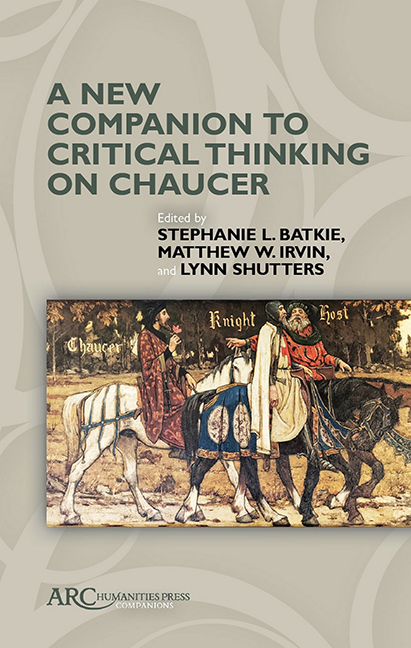Book contents
Response: Merveille, Virginite, Swiven, Craft
Published online by Cambridge University Press: 21 October 2021
Summary
THESE FOUR WORDS, merveille, virginite, swiven, and craft raise a variety of different issues for assessing the significance of Chaucer's lexical practices. As each of the essays demonstrates, as well as considering the words themselves, we must take account of the many synonyms that existed alongside them in Chaucer's usage. The choice of a particular word might be conditioned by a number of different factors. A word might seem more appropriate in a romance than a fabliau, or might suit a tale told by a miller rather than one narrated by a monk. The choice might be made on stylistic grounds, or because of metrical or rhyming factors. Often we find Chaucer drawing on more than one word, so that the switching between these synonyms becomes significant, such as the shifting between virginite, maydenhede and chastitee in the Wife of Bath's Prologue. This mode of stylistic switching is apparent in the way the wife demonstrates her competence in appropriating the Latinate terms of academic and theological debate, auctorite, diffinicioun, bigamye, and turning them upon her opponents. She adopts a similar register when discussing procreation, or engendrure, and uses euphemisms to refer to thynges smale, such as bele chose, sely instrument and quoniam. But the wife is also able to switch registers effectively, adopting a highly colloquial and insulting tone when addressing her husbands, kaynard, dotard, shrewe, and employing terms that pun on more crude alternatives, such as queynte. In order to fully appreciate such stylistic modulation we need a detailed understanding of Chaucer's lexical choices and the ways they would have been perceived by his contemporary audience.
One way of trying to gauge the status of Chaucer's words is through an understanding of their etymological origins. In merveille and virginite we have words of Anglo-Norman provenance, although both are ultimately of Latin origin. Swiven and craft are both recorded in Old English and ultimately go back to Germanic roots. But while such etymological distinctions may be salient to us today, to what extent were they significant or even apparent to Chaucer and his readers? Modern readers of Chaucer can turn to resources such as the MED to establish the etymology of a given word, or the ongoing third edition of the OED for a more extensive narrative account of a word's history.
- Type
- Chapter
- Information
- A New Companion to Critical Thinking on Chaucer , pp. 159 - 168Publisher: Amsterdam University PressPrint publication year: 2021



